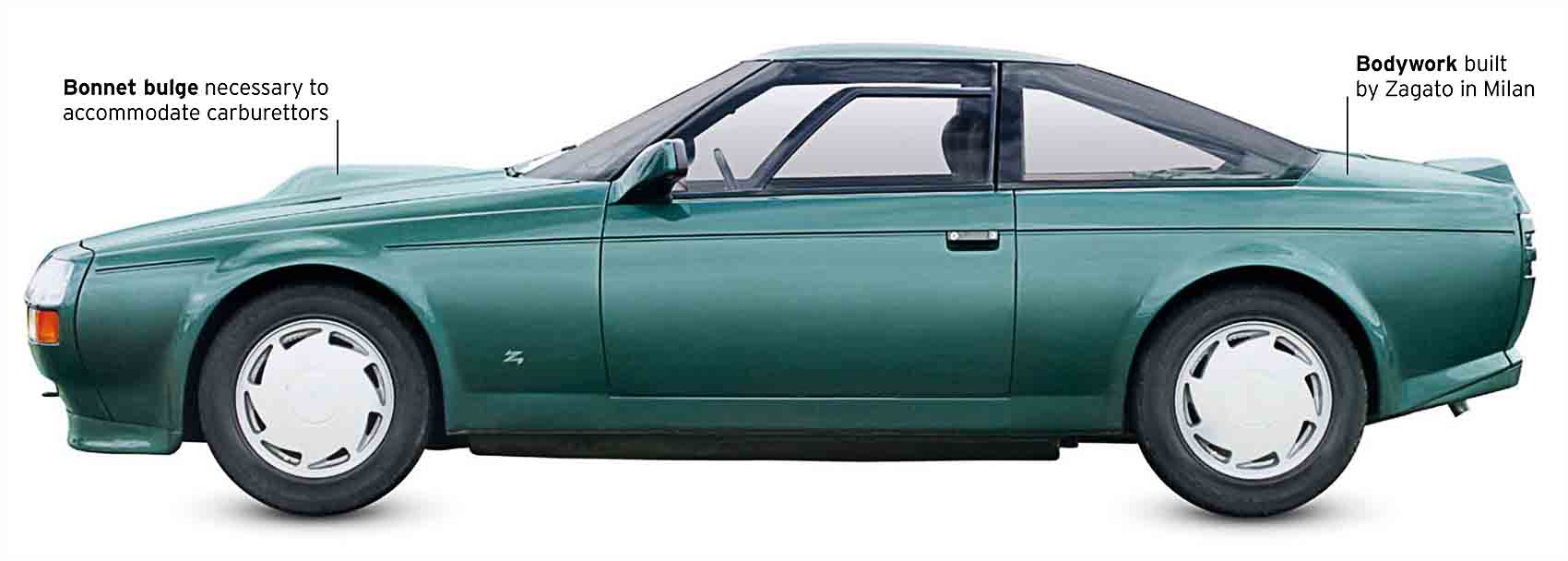
Supercars
Despite the legacy of energy crises and the recessions there were still plenty of buyers for the most glamorous cars, just as there had always been. Group B rally racing added extra impetus to the creation of truly spectacular performance cars, the new competition category requiring just 200 road-going examples to be built to qualify a car for motor sport. But following a string of high-profile crashes the class was scrapped, and suddenly these supercars were being bought by collectors in road-going trim, rather than stripped out for a life of competition on the race track.
Ferrari F40, 1987

| Origin | Italy |
| Engine | 2,936 cc, V8 |
| Top speed | 201 mph (323 km/h) |
The F40 was the world’s fastest production car from 1987 to 1989, and an aggressive response to those who said Ferraris were getting too soft. With twin turbos, 478 bhp, and lightweight composite bodywork, it was created to mark Ferrari’s 40th birthday as a car-make

Keeping its cool
The F40 was covered with air intakes to ventilate its mechanical systems; the two on the nose are called NACA ducts, named after NASA’s predecessor—the National Advisory Committee for Aeronautics—and shaped for aerodynamic efficiency.

Maximum downforce
The towering, full-width, aerofoil wing at the back directed airflow to push the tail of the F40 down onto the road or track surface, aiding roadholding. The four round tail lights were typically Ferrari.

Contoured for aerodynamics
The F40’s retractable headlights maintained optimum airflow efficiency by sinking back down into the car’s streamlined bonnet when not in use. The body was made up of 11 panels, variously made from materials such as Kevlar, Nomex, and carbon fibre, and all coated in lightweight red paint.
Ford RS200, 1984

| Origin | UK |
| Engine | 1,778 cc, straight-four |
| Top speed | 118 mph (190 km/h) |
The RS200 was built from scratch for rallying, the 200 in its name reflecting the number of road cars that had to be made to homologate the car in Group B. Styled by Ghia, built by Reliant, with turbo power from Cosworth, it was an instant classic.
Ferrari 288 GTO, 1984

| Origin | Italy |
| Engine | 2,855 cc, V8 |
| Top speed | 189 mph (304 km/h) |
Intended as Ferrari’s Group B competition car, this limited-edition, high-performance model was consigned to the road when the class was abolished. Based on the 308 GTB, the 288’s slightly smaller engine suited competition rules, but its twin turbos took power up to 400 bhp.
Porsche 959, 1986

| Origin | Germany |
| Engine | 2,994 cc, flat-six |
| Top speed | 190 mph (306 km/h) |
Porsche built 200 of these awesome cars to qualify the 959 for Group B rallying. A technical tour de force, it had computer-controlled four-wheel drive, electronic ride height adjustment, and 444 bhp from a twin-turbo engine that was rear-mounted just like a 911.
Aston Martin V8 Vantage Zagato, 1986

| Origin | UK/Italy |
| Engine | 5,340 cc, V8 |
| Top speed | 185 mph (298 km/h) |
A revival of the Aston/Zagato partnership begun in the 1960s with the DB4GT Zagato, the Vantage was brutally fast, and expensive. Just 50 coupes were built, on a shortened V8 Vantage platform. They were followed by 25 Zagato Volante convertibles, most with the lower-tune V8 engine.
It is a quote. The Classic Car Book – The Definitive Visual History 2016




